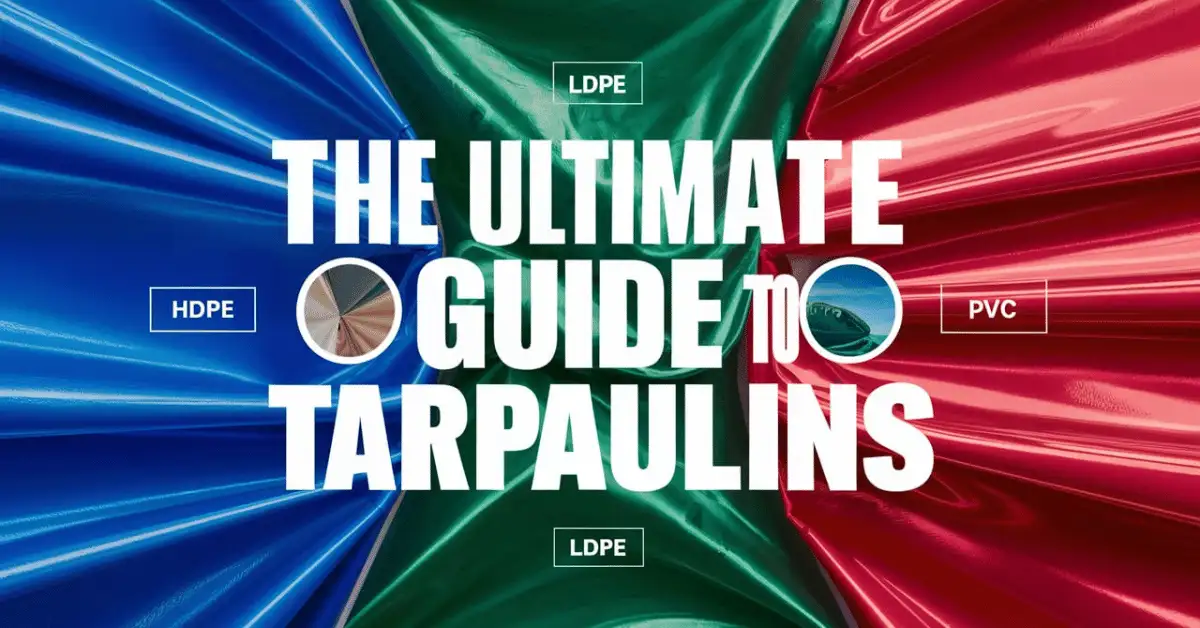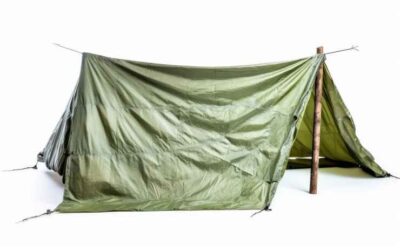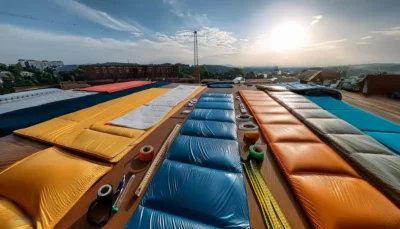Tarpaulins: HDPE, LDPE, PVC, and Other Materials Explained
Tarpaulins (or tarps) are essential in various industries for providing protection and coverage. Whether you need to shield your equipment, safeguard agricultural products, or cover construction sites, choosing the right tarp is critical for ensuring long-term durability and performance.
In this ultimate guide, we’ll break down the different types of tarpaulins available—including HDPE, LDPE, PVC, and more—highlighting their features, best uses, and advantages to help you make an informed decision.
HDPE Tarpaulin
HDPE (High-Density Polyethylene) tarpaulins are highly durable and flexible, made by laminating HDPE fabric with a layer of low-density polyethylene (LDPE). This makes them strong, versatile, and weather-resistant, perfect for heavy-duty outdoor use.
Key Features:
- Durability: Constructed from virgin HDPE materials with UV stabilizers for extra strength and longevity.
- All-Weather Protection: Waterproof, weatherproof, oilproof, and resistant to rotting and chemicals.
- UV Resistant: Designed to withstand UV exposure from both sides, ensuring a longer lifespan in harsh sunlight.
Best Applications:
- Outdoor & Industrial Use: Ideal for covering construction sites, trucks, swimming pools, and farm equipment.
- Flexibility: Due to its strong yet flexible design, HDPE tarpaulins can easily adapt to cover irregularly shaped objects.
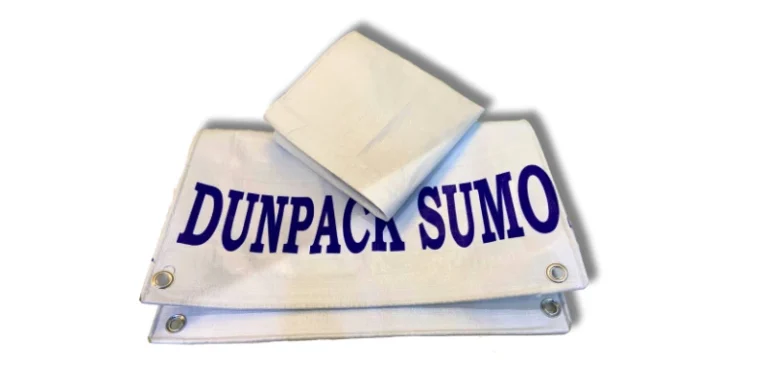
LDPE Tarpaulin
LDPE (Low-Density Polyethylene) tarpaulins are lightweight, eco-friendly, and flexible, making them a great choice for general-purpose covers. Manufactured through the polymerization of ethylene gas, LDPE tarps are often chosen for their recyclability and environmental benefits.
Key Features:
- Eco-Friendly: Made from reprocessed, high-quality polymer granules and 100% recyclable.
- UV Protection: Excellent durability under prolonged UV exposure, even outperforming HDPE and PVC in this regard.
- Water Resistance: Effectively protects against water damage, making it ideal for wet conditions.
Best Applications:
- Weather Protection: Perfect for packaging, storage, and drying yards in coconut and brick factories.
- Rainy Season Use: Provides excellent protection for goods during heavy rain.
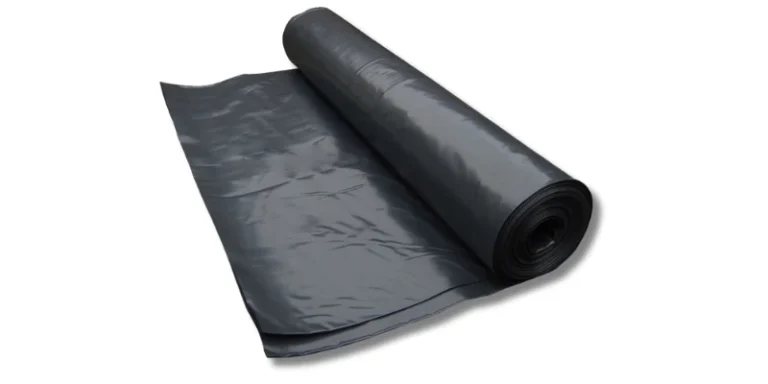
PVC Coated Tarpaulin
PVC (Polyvinyl Chloride) coated tarpaulins are extremely tough, offering superior resistance to a wide range of weather conditions. Made from high-intensity polyester fabric coated with PVC, these tarps are ideal for industrial applications requiring maximum strength.
Key Features:
- Heavy-Duty Durability: Flame-resistant, waterproof, mildew-resistant, and highly durable even in extreme temperatures.
- Strength: Superior tear resistance, breaking strength, and excellent resistance to aging.
- Cold-Weather Use: Retains flexibility and performance even in freezing conditions.
Best Applications:
- Industrial Applications: Suitable for agricultural use, greenhouses, animal husbandry, and as protective covers for trains, ships, and large vehicles.
- Extreme Conditions: Ideal for environments where high resistance to wear and tear is crucial.
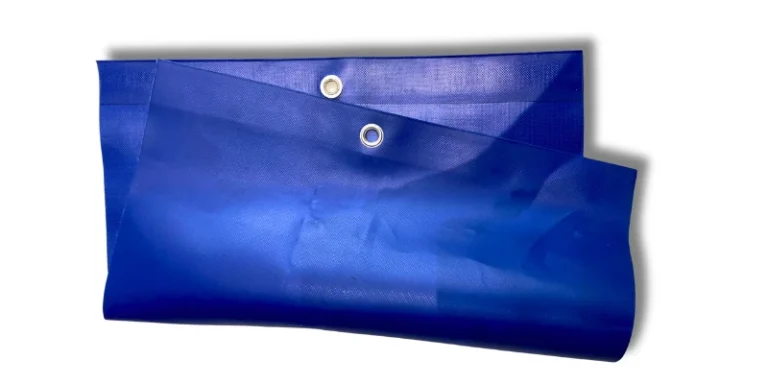
Multi-Layer Tarpaulin
Multi-layer tarpaulins are created using several layers of plastic laminated together through a patented hot-cold process. This results in a tarp that is extremely strong yet lightweight and flexible, perfect for heavy-duty and long-term applications.
Key Features:
- Exceptional Strength: More durable and flexible compared to single-layer tarps of similar thickness.
- Advanced Manufacturing: Sealed with advanced technology for greater strength and resistance to tearing.
Best Applications:
- Heavy-Duty Covers: Ideal for pond liners, truck and railway wagon covers, and extreme weather tents.
- Weather-Resistant Use: Highly suited for conditions where toughness is required without compromising flexibility.
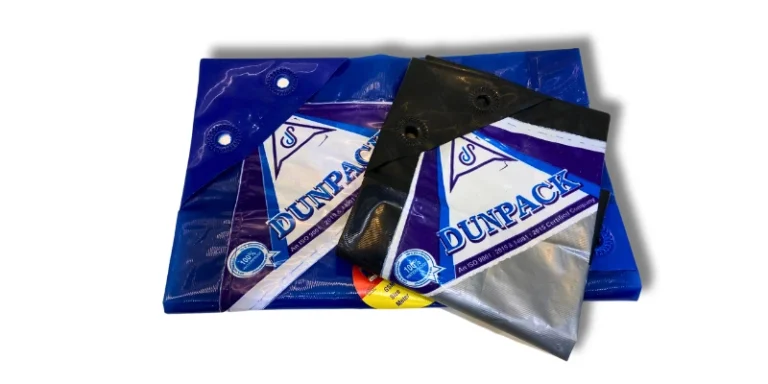
Cross Laminated Tarpaulin
Cross laminated tarpaulins are built using multiple layers of polyethylene films laminated in a crisscross pattern, offering superior strength and tear resistance. This innovative manufacturing technique makes them highly durable and suitable for harsh environments.
Key Features:
- High Tensile Strength: Features advanced CROSS PLY techniques, enhancing its resistance to tearing and cutting.
- Weather Protection: Perfect all-weather protection with a long-lasting, durable design.
Best Applications:
- Versatile Use: Great for farm shelters, monsoon protection, outdoor camping, and shading in warehouses and factories.
- Durability: Excellent for projects where strength and longevity are key.
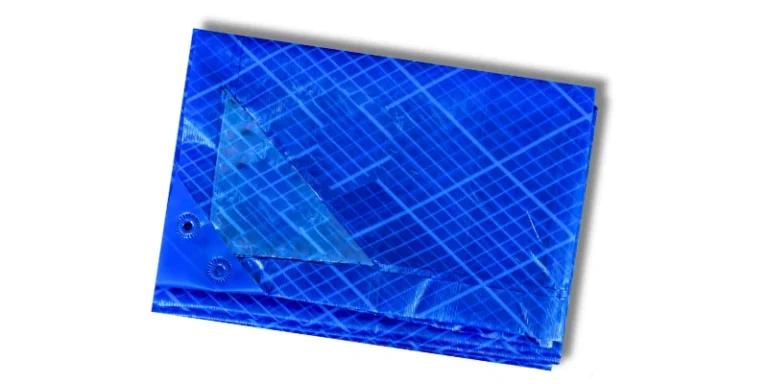
Cotton Canvas Tarpaulin
Cotton canvas tarpaulins are made from 100% natural cotton fibers, offering excellent breathability and flexibility. These tarps are perfect for situations where airflow and breathability are important while still providing strong weather protection.
Key Features:
- Breathable and Waterproof: Allows moisture to escape while keeping out rain and dust, reducing the risk of mildew and rust.
- Cost-Effective: Long-lasting protection with minimal maintenance, providing great value over time.
Best Applications:
- Stationary Use: Ideal for covering goods, equipment, and supplies outdoors.
- Protection in Harsh Elements: Suitable for long-term use where airflow is needed, such as in farming and transport.
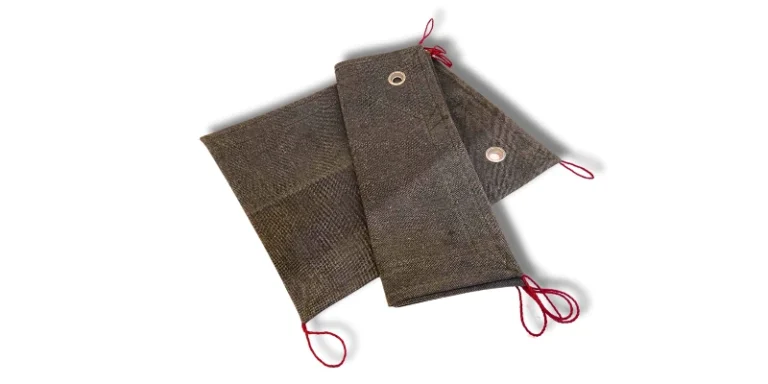
How to Choose the Right Tarpaulin for Your Needs
When selecting the best tarpaulin for your specific application, it’s essential to consider the following factors:
- Material Strength: For heavy-duty or industrial applications, opt for HDPE, PVC-coated, or cross-laminated tarps for maximum strength and durability.
- Weather Resistance: If your tarp will be exposed to extreme weather, choose materials like PVC or multi-layer tarps that offer superior protection.
- Flexibility vs. Breathability: For flexible covers over irregular shapes, HDPE or LDPE works best, while cotton canvas tarps are ideal when breathability is a priority.
- Environmental Impact: If sustainability is a concern, LDPE tarps are 100% recyclable and eco-friendly, making them a greener choice.
Conclusion
Choosing the right tarpaulin depends on your specific needs—whether it’s durability, flexibility, UV protection, or eco-friendliness. Each material has its strengths and is suited for different applications. With this guide, you now have a comprehensive understanding of the key types of tarpaulins, enabling you to make the best choice for your project, whether you’re covering construction equipment, storing materials, or protecting crops.
By selecting the right tarp, you’ll ensure optimal protection, extended lifespan, and better performance, saving you time and money in the long run.
FAQ
Find quick answers to common questions.
What is the main difference between HDPE and LDPE tarpaulins?
HDPE tarpaulins are more rigid and offer greater UV protection, making them suitable for heavy-duty applications. LDPE tarpaulins are more flexible, recyclable, and better suited for light to moderate protection.
Can multi-layer tarpaulins be used in extreme weather conditions?
Yes, multi-layer tarpaulins are designed to withstand extreme weather conditions, making them ideal for applications requiring robust protection.
How do cross-laminated tarpaulins compare to other types?
Cross-laminated tarpaulins offer superior strength and tear resistance due to their innovative manufacturing process, making them ideal for all-weather protection.
Are PVC-coated tarpaulins suitable for use in agricultural settings?
Yes, PVC-coated tarpaulins are highly durable and resistant to weather conditions, making them suitable for various agricultural and industrial applications.
